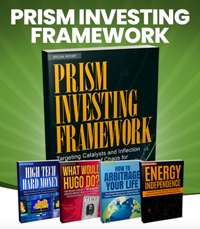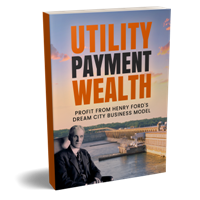 “People that are against Tariffs are FOOLS! We are now the Richest, Most Respected Country In the World, With Almost No Inflation, and A Record Stock Market Price. 401k’s are Highest EVER. We are taking in Trillions of Dollars and will soon begin paying down our ENORMOUS DEBT, $37 Trillion. Record Investment in the USA, plants and factories going up all over the place. A dividend of at least $2000 a person (not including high income people!) will be paid to everyone.”
“People that are against Tariffs are FOOLS! We are now the Richest, Most Respected Country In the World, With Almost No Inflation, and A Record Stock Market Price. 401k’s are Highest EVER. We are taking in Trillions of Dollars and will soon begin paying down our ENORMOUS DEBT, $37 Trillion. Record Investment in the USA, plants and factories going up all over the place. A dividend of at least $2000 a person (not including high income people!) will be paid to everyone.”
– President Donald J. Trump, November 9, 2025, TruthSocial
Free Money!
Politics is a dirty trade. To get elected, politicians must make promises they cannot possibly deliver. Then, once in office, they must somehow pretend to be delivering.
Giving away free money to people is one of the more popular devices. Typically, this is in the form of spending programs or tax credits. The objective is to redirect money to preferred areas of the economy – like defense or energy – and those who operate there.
On occasion, however, when the times call for it, politicians will mail out checks directly to people who didn’t earn them. These checks are above and beyond basic welfare and social security benefits. We saw this with Bush the Younger’s rebate checks and then with stimmy checks during the coronavirus fiasco.
The news from Washington, particularly the recent announcement of a “tariff dividend” to be paid to the American people, is another example of political candy with a new twist. This time, a destructive tax is being depicted as an economic boon.
President Donald Trump is peddling the loot raised in U.S. tariff revenue. He presents it as a windfall from foreign nations. He’s proposing to take this revenue and distribute it as $2,000 checks. He calls it a “dividend,” and plans to send it out around July 2026 – just in time for the mid-term elections. He also claims this will somehow reduce the national debt.
This is a fine example of the “seen and the unseen” error that’s ignored in public economic discourse. Billions in tariff revenue enter the Treasury. We are told this is new wealth that can be freely disbursed. This is the seen.
What is unseen is the actual, destructive cost of obtaining this revenue through tariffs and the inevitable consequences of distributing that money back into the economy in the form of mass payments.
A Tax on the American Consumer
To be clear, tariffs are not a punishment inflicted upon foreign nations that they alone absorb. A tariff is a tax on the importing citizens of the nation that imposes it.
For example, when the government levies a tax on imported washing machines, that tax must be paid by someone. But who?
Initially, the importer pays it to the customs authorities. But it doesn’t start and end there. Remember, business is not a charitable endeavor. When providing goods or services, businesses must earn a profit. To remain solvent, the importer must pass this cost along.
In this example, they sell the washing machine to the retailer at a higher price. The retailer, in turn, sells it to the American consumer – that’s you – at a higher price.
At best, the final price of the imported good is inflated by the full amount of the tariff. We say at best because when protectionist games are being played, domestic producers of competing goods are afforded an artificial cushion. They are incentivized to raise their own prices.
Tariffs acts as a general sales tax levied on specific goods. This tax primarily burdens low-income families who spend a larger percentage of their earnings on essential goods.
Customs duties collected in fiscal year 2025 came to $195 billion. In fiscal year 2026, this may rise to around $300 billion. Regardless, the tariff revenue the government collects is not a “dividend” from China or Mexico. It’s hundreds of billions extracted from the pockets of American consumers and producers.
Tariff revenue represents hundreds of billions in higher costs for materials, tools, and finished goods, making American industry less competitive and diminishing the real wages of every worker.
To celebrate this revenue is to celebrate a self-imposed national decline in real purchasing power.
The Destructive Nature of Protectionism
Beyond elevating prices, tariffs are destructive to the natural flow of the economy. They are a tool central planners use to artificially guide capital and labor into industries where, without protection, they would not succeed.
Tariffs are policies of protectionism. They aim to save domestic jobs in high-cost, inefficient industries from competition. However, resources are not infinite. To keep one inefficient industry alive by force of law requires drawing capital, labor, and talent away from other, more efficient, wealth-creating industries.
Tariffs, for example, may save 1,000 jobs in the steel industry. But, in return, 5,000 jobs are lost in industries that use steel – such as construction, manufacturing, and automobiles – because their material costs have been artificially raised. This makes their final products more expensive and less competitive within the U.S. and with foreign trading partners.
Tariffs, in short, subtract wealth. They do not add to it. They make the nation poorer, not richer, by subsidizing inefficiency and penalizing productivity. The idea that we can grow rich and pay down the debt by intentionally preventing ourselves from buying goods at the lowest available price is absurd and has been refuted for centuries.
The other absurdity, however, is the proposed “dividend” distribution. The Committee for a Responsible Federal Budget estimates this plan could cost $600 billion, which is double the tariff revenue projected for fiscal year 2026.
If the payout were equal to the projected revenue – say, $300 billion – the government has merely collected $300 billion from the American people via the tariff-tax and handed it straight back to them. American citizens have not gained anything in aggregate.
The tariffs’ destructive, distorting effect on trade and production remains. The cost of goods remains high, and the overall economy is still poorer than it would have been under free trade.
But the payout is not equal to the projected revenue. It’s double ($600 billion!). This is where President Trump’s promise to reduce debt breaks down. A $600 billion expenditure against a $300 billion revenue stream means the government must borrow the additional $300 billion.
The claim that we’ll also pay down the debt while simultaneously proposing a $600 billion program based on only $300 billion in revenue doesn’t add up. But that’s not all…
The Irresistible Promise of Free Money
The act of dumping $600 billion dollars back into the economy as government sponsored consumption stimulus checks, even if partially offset by tariffs, will further the inflation problem. Yet, that is the very problem the checks are supposed to solve.
People are frustrated with the high cost of living. They want more money. But what causes the cost of living to rise?
Too much money chasing too few goods.
The tariffs restrict the supply of goods by penalizing imports and distorting domestic production. Then, the dividend checks inject a massive surge of new purchasing power (some of it borrowed) into the hands of consumers.
Tariffs, followed by tariff dividend checks, limit the supply of goods while simultaneously inflating demand. This is a plan that promises relief while, in effect, it accelerates the very inflation that consumers are being destroyed by.
In short, a tariff dividend is not a dividend at all. It’s a refund of an economically damaging tax. Moreover, this refund will be partially financed with debt.
Ultimately, you can’t get something for nothing. The wealth of a nation is generated by production, efficiency, and the division of labor that is best facilitated by free exchange. Tariffs, on the other hand, destroy wealth.
Paying the tariff revenue back to the people simply redistributes a net loss. What’s more, it finances that distribution through deeper debt and currency debasement.
So, why do it?
Like all government programs, it comes down to politics. Tariff dividend checks are great politics. Trump is a great politician.
The promise of free money for the majority of Americans is simply irresistible. And in a democracy, where the mob rules, that’s what counts.
[Editor’s note: Join the Economic Prism mailing list and get a free copy of an important special report called, “Utility Payment Wealth – Profit from Henry Ford’s Dream City Business Model.” If you want a special trial deal to check out MN Gordon’s Wealth Prism Letter, you can grab that here.]
Sincerely,
MN Gordon
for Economic Prism
Return from The Irresistible Promise of Free Money to Economic Prism




